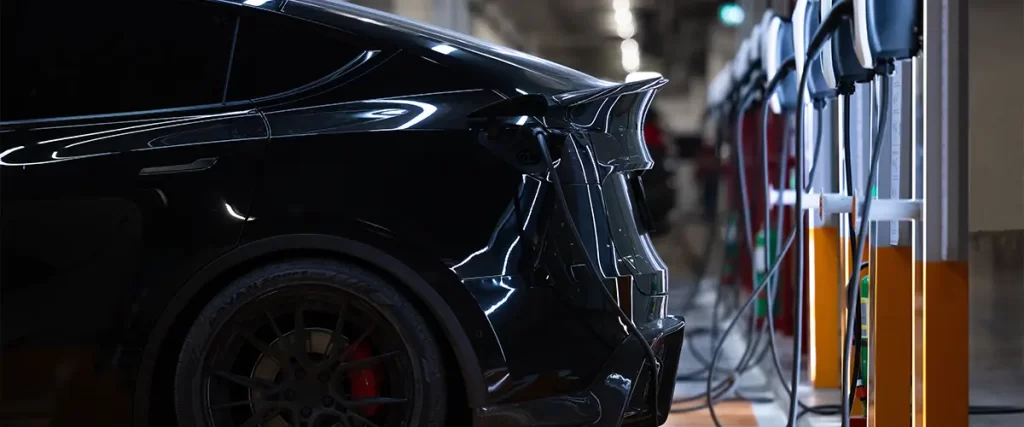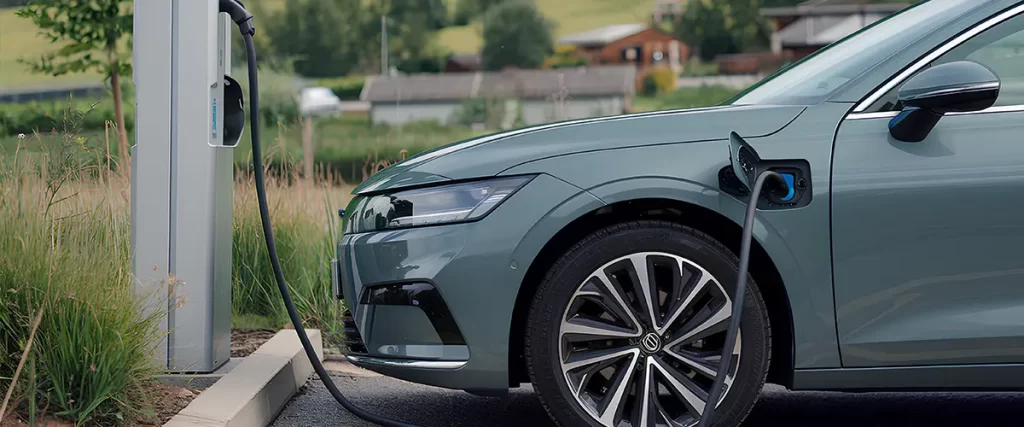As electric vehicles become more popular, the demand for EV chargers continues to grow. EV owners rely on their chargers to keep their vehicles powered and ready to hit the road. However, like any technology, EV chargers aren’t perfect, and they can sometimes cause frustration.
In this blog, we’ll explore 10 common problems with EV chargers in 2025, explain why they happen, and offer simple tips to handle them.

1. Slow Charging Speeds
One of the most common complaints from EV owners is slow charging. You plug in your car, expecting a quick top-up, but it seems to take forever.
Why It Happens:
- Using a Level 1 charger (standard wall outlet) instead of a faster Level 2 or DC fast charger.
- Older chargers may not support the higher charging speeds of newer EVs.
- Shared charging stations can slow down speeds when multiple users are connected.
What You Can Do:
- Upgrade to a Level 2 charger for faster home charging.
- Check for chargers that support your EV’s maximum charging speed.
- Avoid peak usage times at public stations.
2. Charger Compatibility Issues
Not all EV chargers are compatible with every electric vehicle. Sometimes, you’ll arrive at a station only to find it doesn’t support your car’s charging port.
Why It Happens:
- Different EVs use different connectors, like CCS, CHAdeMO, or Tesla-specific plugs.
- Some chargers are designed for specific brands or regions.
What You Can Do:
- Carry an adapter for your EV if it supports multiple connector types.
- Use apps to locate chargers that are compatible with your vehicle.
3. Faulty Chargers or Broken Stations
Public chargers aren’t always reliable. It’s frustrating to pull up to a station and find it out of order.
Why It Happens:
- Wear and tear from frequent use.
- Poor maintenance by the charging station provider.
- Software or hardware glitches in the charger.
What You Can Do:
- Report broken chargers to the network operator using their app or hotline.
- Always have backup charging locations in mind when planning a trip.
4. Charging Cable Length
Sometimes, the charging cable is too short to comfortably reach your car, especially in tight parking spaces.
Why It Happens:
- Chargers are installed with shorter cables to save costs.
- Parking spots may not align well with the charging unit.
What You Can Do:
- Park strategically to ensure the cable can reach your EV.
- Consider purchasing an extension cable if allowed by the charger manufacturer.
5. Software Bugs and Connectivity Issues
Modern EV chargers often rely on software for features like payment, usage tracking, and remote monitoring. Unfortunately, these systems can experience bugs or connectivity problems.
Why It Happens:
- Outdated software in the charger.
- Weak Wi-Fi or cellular signal in the charging area.
- Problems with the charger’s app or payment system.
What You Can Do:
- Regularly update the software on your home charger.
- Use chargers in areas with strong connectivity.
- Keep a backup payment method handy if the app fails.
6. High Charging Costs
While EVs are generally cheaper to operate than gas vehicles, charging costs can add up, especially at public fast-charging stations.
Why It Happens:
- Fast chargers typically charge higher rates than slower Level 2 chargers.
- Some providers have additional fees for idle time or membership.
What You Can Do:
- Compare prices using EV charging apps.
- Plan ahead to charge at home or at free charging stations when possible.
- Avoid leaving your car plugged in after it’s fully charged to avoid idle fees.
7. Overheating Chargers
An overheating charger can be alarming and may even stop working mid-charge to prevent damage.
Why It Happens:
- Poor ventilation around the charger.
- Long charging sessions on a hot day.
- Faulty internal components in the charger.
What You Can Do:
- Ensure the charger has proper ventilation.
- Avoid charging during extreme heat or opt for shaded charging stations.
- If overheating persists, have the charger inspected by a professional.
8. Lack of Charging Stations
Even in 2025, some areas still lack sufficient charging infrastructure, leaving EV owners struggling to find nearby chargers.
Why It Happens:
- Slow rollout of charging networks in rural or less-populated areas.
- Limited investment in public EV charging infrastructure.
What You Can Do:
- Plan longer trips carefully, ensuring there are chargers along your route.
- Advocate for more charging stations in your community.
9. Faulty Power Supply
A charger that isn’t receiving enough power from the grid can cause charging to stop or slow down unexpectedly.
Why It Happens:
- Power surges or voltage drops in the local grid.
- Overloaded circuits in older homes or buildings.
What You Can Do:
- Upgrade your home’s electrical system to handle EV charging.
- Use surge protectors or voltage stabilizers for home chargers.
10. Limited Support for Smart Features
Many new EV chargers come with “smart” features like energy monitoring, scheduling, and remote control. However, not all chargers are compatible with these features, or they may not work as intended.
Why It Happens:
- Outdated chargers or firmware.
- Incompatibility with certain EV brands or apps.
What You Can Do:
- Invest in a modern, smart-compatible charger.
- Regularly update your charger’s firmware.

Addressing the Common Problems with EV Chargers
While the 10 issues we’ve outlined can be frustrating, understanding their causes and solutions can make owning an EV much easier. Let’s look at practical ways to tackle these problems.
Handling Slow Charging Speeds
Slow charging can be a major inconvenience, especially when you’re in a hurry. If you frequently encounter this issue, consider:
- Upgrading Your Home Charger: Install a Level 2 charger to significantly reduce charging time.
- Checking Public Charger Details: Use apps that provide information on charging speeds at public stations to avoid slow chargers.
- Avoiding Shared Stations: Charging at less busy times can help you get the full power output.
Dealing with Compatibility Issues
Carrying the right tools and planning ahead can prevent the frustration of incompatible chargers.
- Invest in Adapters: Many EVs support adapter cables for different charging standards.
- Use EV Apps: Apps like PlugShare or ChargePoint help you find compatible stations before you arrive.
- Look for Universal Chargers: Some networks now offer universal plugs to support multiple vehicle types.
Reporting Faulty or Broken Chargers
Broken stations can derail your plans, but you can help improve the network.
- Contact the Operator: Most public chargers have a contact number or app for reporting issues.
- Leave Feedback: Informing others about broken chargers on EV apps can save fellow drivers from wasting time.
- Plan Backup Options: Always know the location of alternative chargers in your area.
Overcoming Cable Length Challenges
A short charging cable shouldn’t be a dealbreaker. Here’s how to work around it:
- Position Your EV Strategically: If possible, park closer to the charger to reduce the distance.
- Check Installation Specs: When installing a home charger, opt for longer cables to avoid this issue.
- Verify Extension Cable Safety: Some manufacturers allow extensions, but check compatibility to avoid damage.
Fixing Software Bugs and Connectivity Issues
Smart features are convenient, but glitches can get in the way.
- Update Software Regularly: Keep your charger’s firmware and associated apps up to date.
- Switch Networks Temporarily: If a specific app isn’t working, try a different network or payment method.
- Report Persistent Bugs: Contact customer support for help with recurring issues.
Cutting Down High Charging Costs
Charging costs vary greatly depending on the location and charger type. Here are some ways to save:
- Charge at Home: Home charging is generally much cheaper than public fast chargers.
- Look for Free Stations: Some businesses and public areas still offer free EV charging as a perk.
- Avoid Idle Fees: Unplug as soon as your car is fully charged to prevent extra costs.
Preventing Overheating Chargers
Overheating chargers can damage equipment and interrupt charging. Stay safe by:
- Ensuring Ventilation: Make sure your home charger is installed in a well-ventilated area.
- Monitoring Charging Times: Avoid leaving your car plugged in for long periods in extreme heat.
- Getting Professional Maintenance: If overheating happens often, have the charger inspected by a licensed electrician.
Expanding Charging Infrastructure
The lack of chargers in certain areas can be frustrating, but you can take steps to mitigate it:
- Plan Ahead: Use apps to map out chargers before you start a long trip.
- Advocate Locally: Encourage your community to invest in more EV charging stations.
- Install a Home Charger: A personal charger eliminates the need to rely on public infrastructure.
Improving Power Supply for EV Chargers
If your home’s electrical system isn’t up to the task, consider an upgrade:
- Hire an Electrician: Have a professional inspect your wiring and ensure it can handle EV charging.
- Add a Dedicated Circuit: This prevents your EV charger from overloading shared circuits.
- Use Power Management Features: Some chargers can adjust power usage to avoid straining your system.
Maximizing Smart Features
Smart chargers make EV ownership more convenient, but only if they work as intended:
- Buy a Reliable Charger: Choose a trusted brand known for well-designed smart features.
- Test Connectivity: Ensure your charger’s Wi-Fi or cellular connection is strong enough to support smart functions.
- Use the Right Apps: Some apps offer more compatibility with your EV model or specific charger.
FAQs About 10 Common Problems with EV Chargers in 2025
Q: Are Level 2 chargers worth it for home use?
A: Yes! Level 2 chargers are much faster than Level 1 and provide significant time savings for daily charging needs.
Q: How do I know if my home’s electrical system can handle an EV charger?
A: Consult an electrician to evaluate your wiring and install a dedicated circuit if needed.
Q: Why does my EV charger keep stopping mid-charge?
A: This could be due to overheating, a power supply issue, or a fault in the charger. Have it inspected by a professional.
Q: Can I use any public charger for my EV?
A: Not all chargers are compatible with every EV. Use apps to find chargers that support your vehicle’s connector type.
Q: How long do EV chargers last?
A: With proper maintenance, most EV chargers can last 10–15 years.

Solve Your EV Charging Problems with Crosswyre Electric
EV chargers are essential for keeping your car ready to go, but they can come with their fair share of challenges. Whether you’re dealing with slow charging, compatibility issues, or overheating, most problems can be resolved with a bit of knowledge and the right tools.
At Crosswyre Electric, we specialize in EV charger installation, maintenance, and repair to ensure your charging experience is smooth and hassle-free. From upgrading your home setup to troubleshooting issues, we’re here to help.
Contact Crosswyre Electric today at (610) 214-2179 to schedule your consultation and get expert solutions for all your EV charging needs in Coopersburg, PA!
